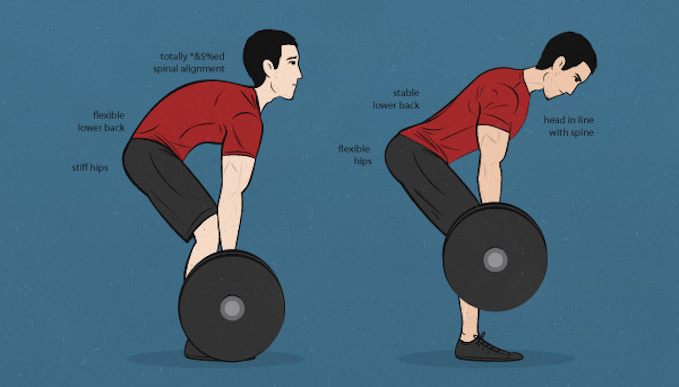
The Surprising Truth About Deadlifts… Part 2
We are back with the follow up blog on the very popular exercise, the deadlift! If you didn’t get a chance to read part 1 I will link it here, and it wouldn’t be a bad idea to read that post before this one! Today I am going to go over a few different variations of the deadlift and why we use them with certain clients that we train at our gym.
Now, after going over and understanding what a hip hinge is and how that is the movement pattern of a deadlift, this doesn’t mean everybody has the same capabilities with their movement. Things such as injuries, medical conditions, daily activities/hobbies, and even occupation can all cause some issues in any movement pattern. I am going to go over 5 variations of the deadlift that use different modalities and reasoning behind why you might choose a specific one. These are just a few of the many variations of the deadlift you can choose from and they are all worth giving a shot!
KB Deadlift Elevated
The kettlebell deadlift is a great variation and we use this version a lot when first teaching clients how to perform the deadlift. I like the kettlebell because you can place the kettlebell straight down between your legs forcing perfect form to be able to complete the movement. You might also notice in the video that we use a step to reduce the range of motion in the movement. If a client doesn’t have adequate mobility in the ankles or hips, then elevating the pattern might make a world of difference! And likewise if a person has adequate mobility to deadlift from the ground then reducing the elevation is perfectly fine!
Trap Bar Deadlift
Next up we have the trap bar deadlift which is becoming very popular now a days and there are good reasons why! By being able to stand inside of the trap bar you will be able to take a lot of stress off of the low back, you can engage your back a little better with a neutral hand position compared to a barbell, and also the handles are raised higher than a barbell so people with hip and ankle mobility may find this modality to feel more comfortable. Overall a great variation and an awesome one to throw into your programming if you haven’t already!
Sumo Deadlift
Next up we have the first barbell variation of a deadlift and that is the sumo deadlift. You can perform a sumo deadlift with other modalities such as a kettlebell, but we will be showing you with a barbell. The sumo stance is given the name due to the wide stance (outside shoulder width) compared to a normal conventional stance where your feet are right under your hips. The wider the stance the less of a hip hinge you will need. You might notice that in this video he is barefoot and there are some benefits to this. Deadlifting barefoot isn’t necessary but can help certain clients keep weight in their heels by having better sensory input compared to wearing shoes. We won’t use the sumo deadlift as a beginner just learning to deadlift, but these are a great variation if you already have practice with the movement.
Conventional Deadlift Elevated
The most popular forms of the deadlift that I hear about people doing is the conventional deadlift. The conventional deadlift is performed usually with a barbell and unlike the sumo deadlift your feet will be right under your hips. This makes the movement require more hip and ankle mobility compared to the sumo deadlift. Even though this variation is very popular it is also very advanced, and most people will most likely benefit more from a trap bar or a sumo stance kettlebell deadlift if they are just learning the form. That being said it is still a great way to challenge the posterior chain and there is always a time and place to program these.
Single Leg Single Arm Deadlift
The last variation I will cover is a single leg version of the deadlift. Many people neglect unilateral posterior chain work, and the single leg deadlift is a great tool for the job. We can use the same principles as stated before in the other versions by using a box to reduce the range of motion of the movement. The higher the elevation the less mobility needed to perform the movement. Some additional benefits of using a single leg variation is that it will improve balance and stability, help prevent any asymmetries, and it will still strengthen the posterior chain at the same time!
Remember these are just some of the many ways you can perform a deadlift, and there are definitely other great variations out there! To conclude our topic of the deadlift just remember that the deadlift itself is a great exercise and can benefit everybody you just need to find a variation that you enjoy and can perform properly! If there is a variation that you enjoy feel free to share in the comments!